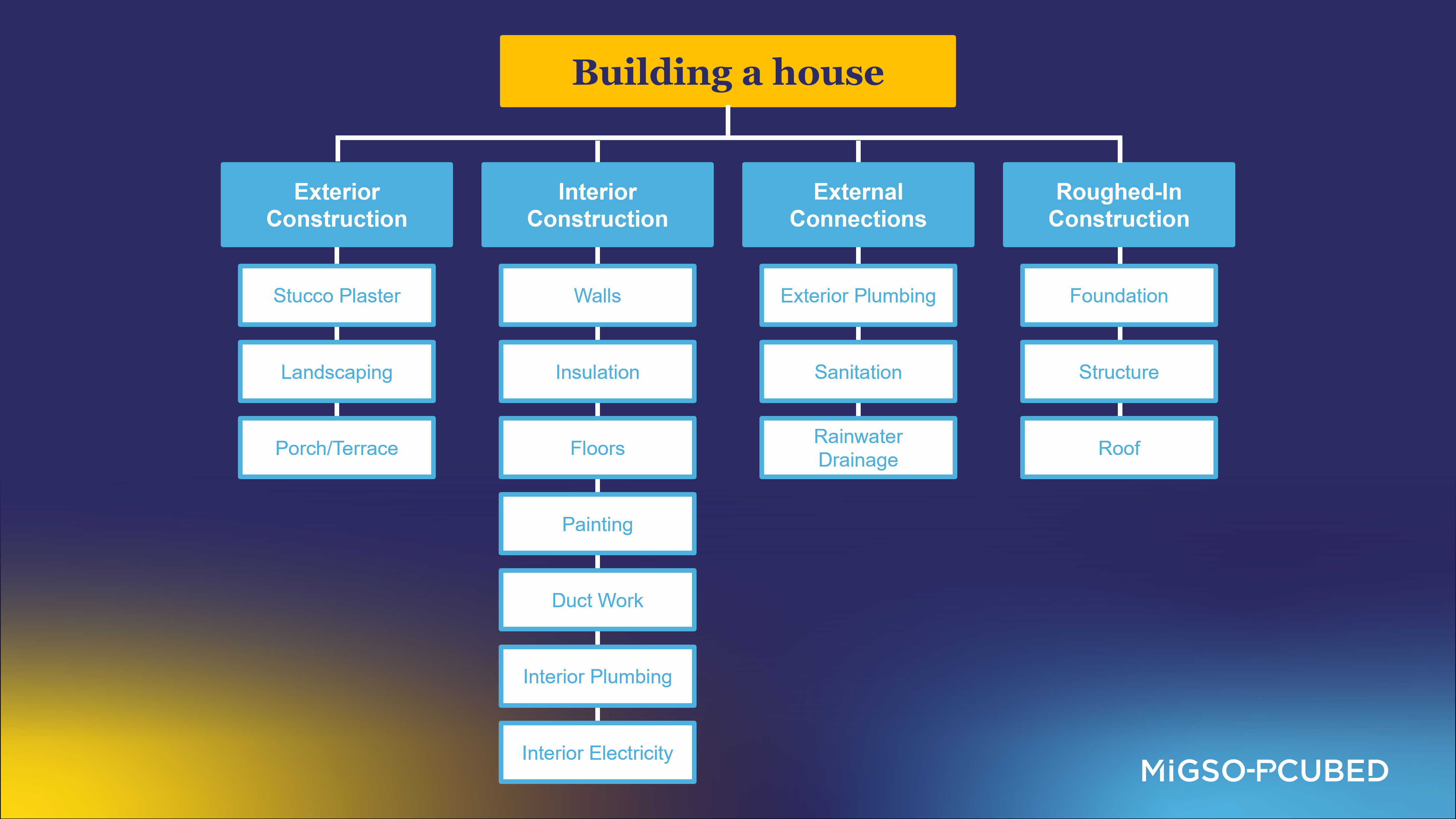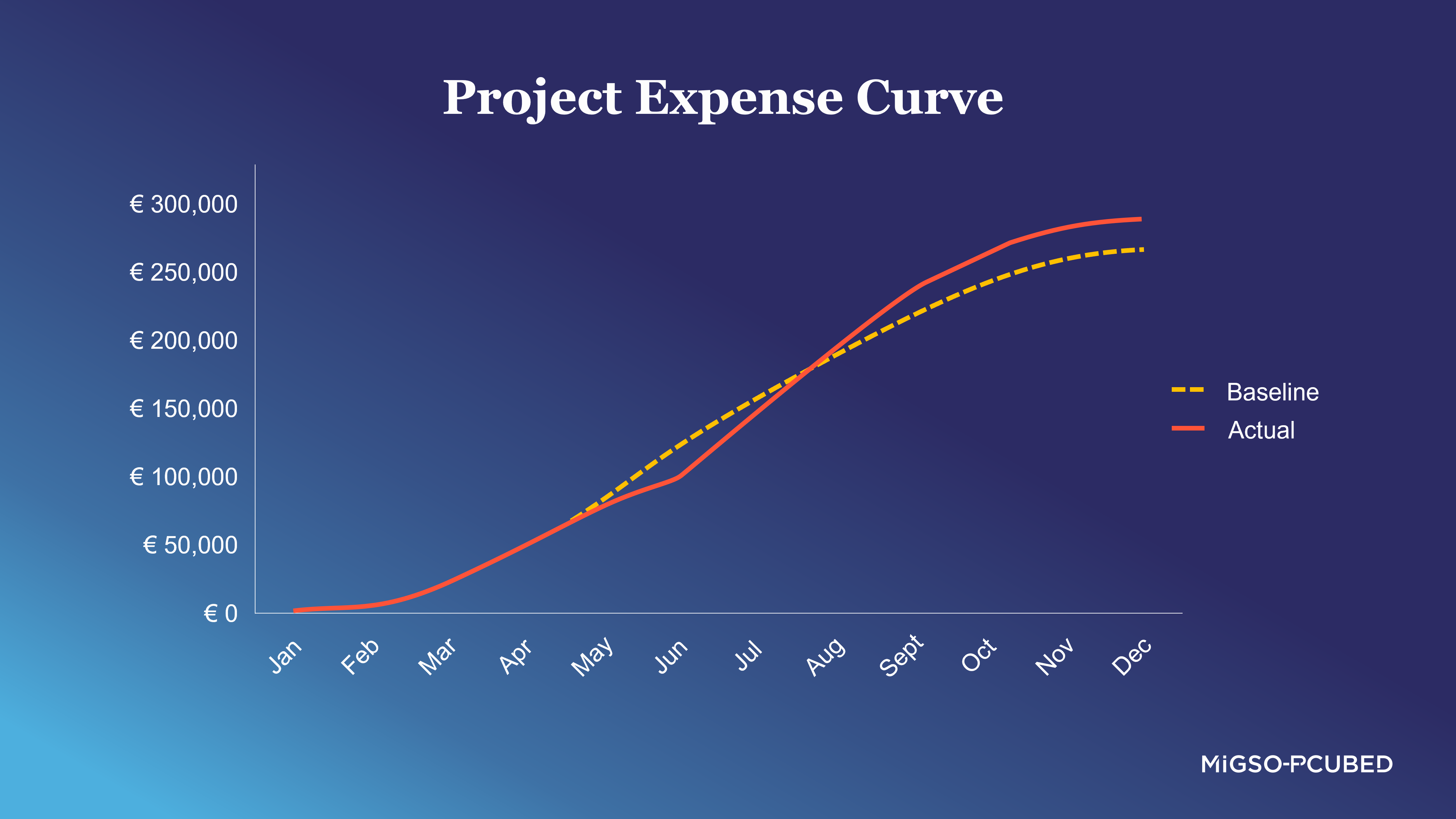7 Keys to a Successful Project Setup
- Home >
- Blog >
- Project Management Delivery >
- Keys to a Successful Project Setup
Are you launching a new project? Wondering how to get organized? Where to start? According to PMI, in 2021, only 72% of projects met their initial objectives. And 37% of projects had an ill-defined initial scope. In a few lines, MIGSO-PCUBED explains why a project’s setup is crucial to achieve its objectives.
Our environment is rapidly changing, and instability has become chronic. Initiating and structuring a project is the key to mastering potential changes, whether they are internal or external to the project. A precise methodology and the respect of certain elements will help to limit deviations from objectives and build the success of the project. Although not exhaustive, MIGSO-PCUBED identifies and explains these key success factors using the example of a house construction project.
These are the 7 keys to a successful project setup:
Table of Contents
1) Identify the project scope
Having defined the project’s objective in the “project charter”, the first key factor for a successful setup is identifying the scope. The scope provides the vision of what the project aims to achieve as well as what work needs to be done to meet and maintain the project objectives during its lifecycle.
The scope can be defined by gathering stakeholder requirements and should result in:
- A detailed description of the project scope,
- Identification of deliverables,
- Definition of project acceptance criteria,
These elements must be validated by all stakeholders and serve as a benchmark to guarantee delivery in line with expectations and avoid anything “out of scope”.
This step must be taken right from the start and forms a solid basis for project planning, execution, and control.
Example:
Before starting construction work on a house, it’s vital that all parties involved agree on the number of rooms to be built, the layout requirements, and the materials to be used. All of these must also align with the expectations of the future owners.
2) Understand the project environment
It’s important to understand the project environment. Knowledge of the organization’s project management culture should enable us right from the start to identify and adapt the best practices to be implemented in terms of communication, governance, or any other aspect of project management.
Similarly, it’s essential to identify our stakeholders, their project management maturity, and their level of commitment to the project. Certain stakeholders, also known as “Key Stakeholders”, may have a decision-making or managerial role, and identifying them as early as possible, right from the initialization phase, is vital to the running the project smoothly.
Example:
Returning to our example of building a house, knowing the habits of the craftsmen in terms of site reviews and meeting deadlines can be an asset to the success of the project. Likewise, knowledge of the various regulatory bodies and rules involved is essential to ensure that the construction project runs smoothly (Obtaining construction permits, ensuring compliance for inspections, etc.).
3) Define a solid baseline for activities and organization
When launching a project, creating a baseline is essential. This serves as a point of reference for the entire team and all stakeholders, ensuring understanding and alignment, as well as facilitating communication.
Establishing a WBS (Work Breakdown Structure), a hierarchical representation of all the tasks to be completed to achieve the project’s objectives, enables the work to be broken down into smaller, more manageable activities. This tool facilitates planning, initial budget estimation, and resource allocation; it also provides an overview of the different stages of the project.
The OBS (Organizational Breakdown Structure) is a hierarchical representation of the project’s various organizational entities to identify responsibilities and relationships between the various players. Putting this structure in place at the very start of the project ensures a clear understanding of everyone’s roles, facilitates communication, and avoids conflicts.
Example:
To create these baselines, the WBS in particular, we can turn towards experts who know the environment and who have already carried out similar projects. This will help ensure that the baseline is coherent and solid. In our example of building a house, we could consult building experts to help us define our activities and organization.

4) Define the schedule baseline
A successful project setup also depends on creating a proper governing schedule to serve as a first point of reference. This provides a vision of the main tasks to be completed and their sequencing (links between tasks). It also solidifies milestones to set a course for all stakeholders. It’s essential to build this benchmark using the structure of the WBS, based on expert advice or feedback from previous projects, as it serves as a point of comparison for assessing project schedule performance and identifying resource requirements.
Example:
During construction, several trade contractors may be involved (bricklayers, plumbers, electricians, etc.). Drawing up an activity schedule at the start of the project facilitates team coordination and sets deadlines for each participant. In the event of delays, you can quickly assess the impact on the completion date.

5) Define the cost baseline
Budgeting consolidates the costs of project activities and resources to establish a baseline approved by all stakeholders. Several methods are available for this purpose, such as using data and financial statements from previous projects and holding cost estimation meetings with experts in the field. Based on the previous schedule and the budget envelopes allocated to various task packages, it is then possible to define the forecast schedule of expenditure. This benchmark enables cost control, improved performance, financial variant assessments throughout the project, and accurate decision-making.
Example:
In the case of building a house, the target budget will be determined by the borrowing capacity or contribution allocated to the project. This budget can be refined and consolidated with the help of quotes from each contractor. By knowing the costs and payment deadlines of the contractors, we can compare actual expenditure with scheduled expenditure and thus control any slippage.

6) Define the project governance structure
A clear governance structure establishes roles and responsibilities, decision-making and communication channels within the project. This promotes transparency, reduces the risk of confusion, and enhances the efficiency of decision-making at all levels.
The governance structure should be defined at the start of the project and updated at each milestone to provide not only a framework, but also support for the project, phase by phase.
Example:
Defining a reporting process in advance for operations work (who reports information, to whom, how the report is communicated, and how often it is sent to recipients, etc.) will enable better site monitoring.
7) Establish Project Controls
Plan Project Controls to ensure continuous monitoring of the project’s performance. This includes implementing reporting mechanisms, performance indicators, and quality control processes, all ensuring proactive management and that any deviations from the baseline are quickly corrected.
The impact of any change to a project baseline will thus be controlled and will follow the control process.
Example:
A weekly progress report by the site foreman ensures that deadlines are met and that quality is maintained.
Now you’re ready to launch your projects effectively, build solid baselines, and define the right management approach to achieve your objectives. We have listed the main success factors for a good project setup, which are unfortunately all too often forgotten due to operational urgency. MIGSO-PCUBED, as an expert in project management, supports numerous organizations worldwide and can help you launch your projects and ensure their success as well.
This article was originally written in French by Cédric Laurent, Aurélien Chardonneau, and Jonathan Rinfray.
More on the same subject
You might also like:
Loved what you just read?
Let's stay in touch.
No spam, only great things to read in our newsletter.



